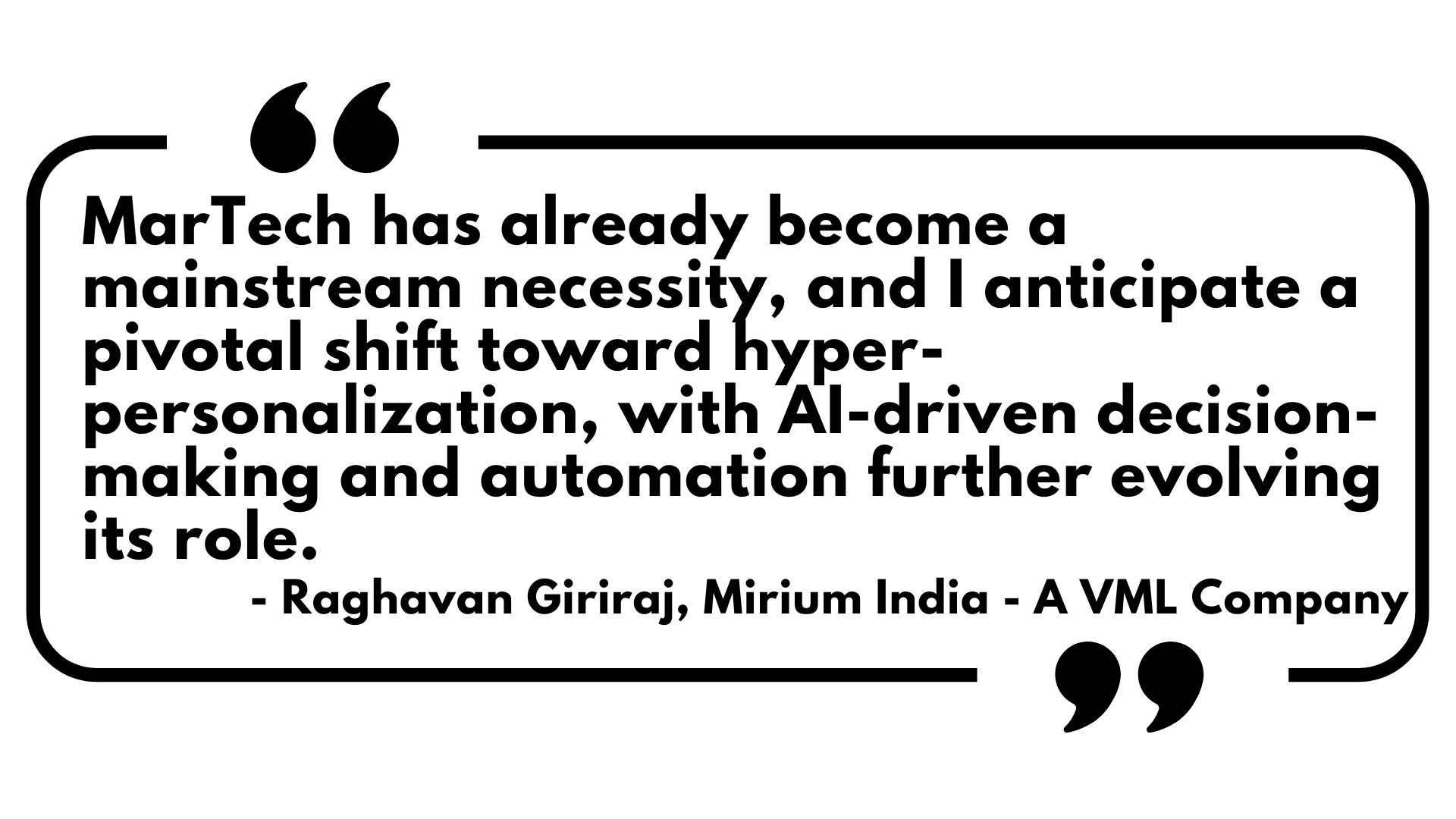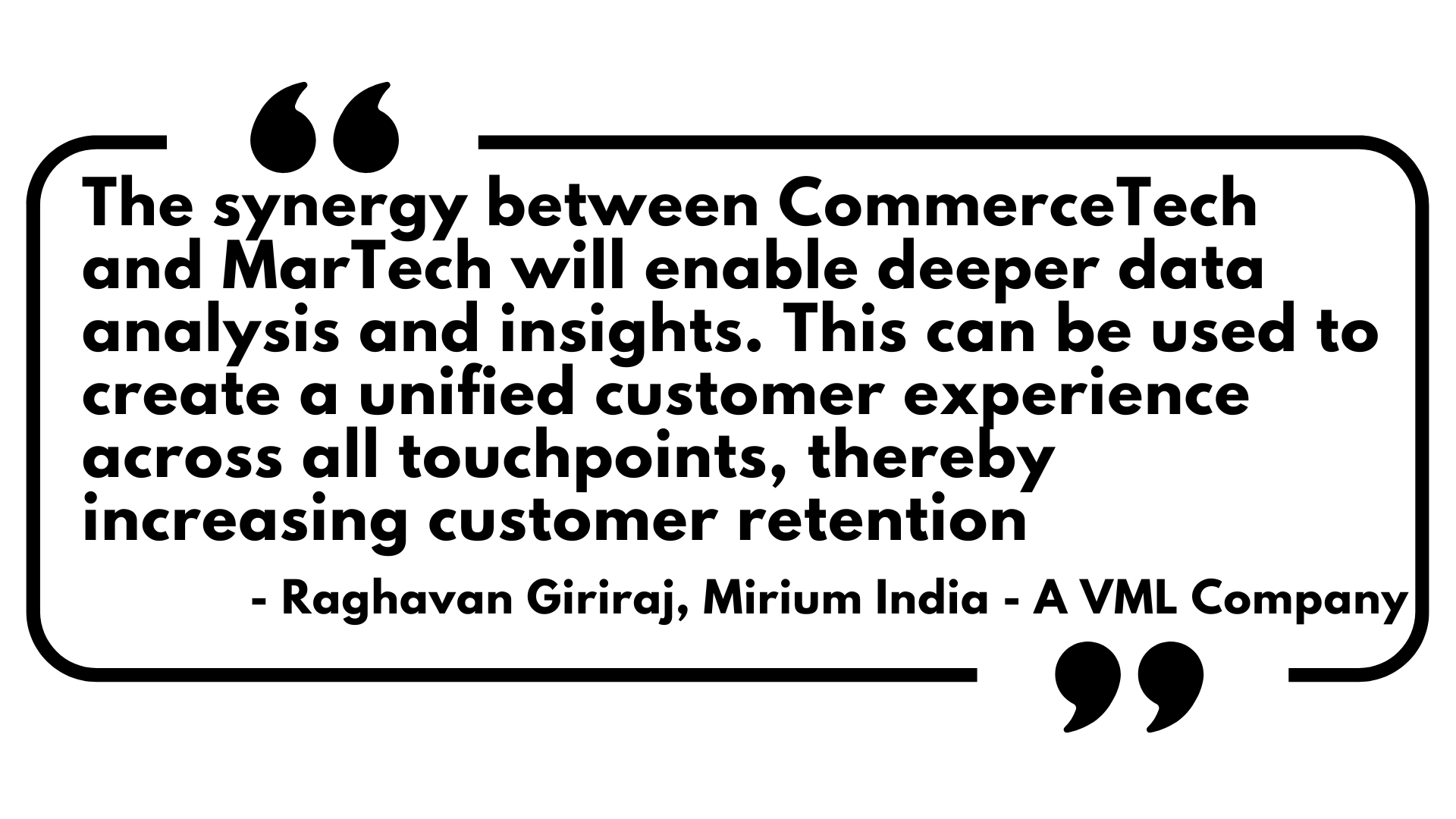
Can you please share your professional journey and a few key milestones that have significantly shaped your career?
Imagine climbing a towering mountain, with each step revealing new views and challenges. My professional journey has felt much the same.
I began as an engineer, which provided a solid foundation. Pursuing my master’s in the UK broadened my perspective. I started my career as a Project Manager in a digital agency, leading global website projects and advancing in the project management space. I also ventured into entrepreneurship before transitioning to my current role as the Director of MarTech at Mirum, a VML company.
Two key milestones have shaped my career:
Throughout my journey, I’ve been fortunate to receive unwavering support from Mirum’s management. They encouraged me to experiment, connect with executives, and make impactful decisions.
As the Director of MarTech at Mirum, a VML company, I lead the MarTech delivery practice, ensuring smooth operations and successful implementations. My journey continues, much like a climber eagerly anticipating the next breathtaking vista, always ready for the next thrilling ascent.

MarTech has transitioned from being a novelty to an absolute mainstream necessity. What pivotal shift do you expect to will further evolve the role of MarTech in the future?
MarTech has already become a mainstream necessity, and I anticipate a pivotal shift toward hyper-personalization, with AI-driven decision-making and automation further evolving its role. This will involve leveraging AI and machine learning to analyze historical data, predict customer needs (next best offer/next best action), and craft tailored marketing strategies that resonate on an individual level. As we embrace hyper-personalization, we must also ensure data privacy is maintained without compromise.
Additionally, the next big step in MarTech’s evolution will focus on smarter data integration and usage. This is where Customer Data Platforms (CDPs) will shine even brighter. CDPs will be essential for creating unified customer profiles, enabling more accurate targeting and personalized marketing. They will also facilitate real-time data activation, ensuring that every interaction—whether through email, social media, in-store visits, or mobile apps—is consistent and seamless.
As per the India MarTech and CommerceTech Report 2024, online commerce continues to play a significant role in organizations. How do you see the integration of CommerceTech with MarTech evolving?
The synergy between CommerceTech and MarTech will enable deeper data analysis and insights. This can be used to create a unified customer experience across all touchpoints, thereby increasing customer retention. For instance, if a customer hasn’t made a purchase in a while, a MarTech platform can send a personalized email offering a special discount on items they’ve previously shown interest in—an insight drawn from the commerce website.
In terms of Omnichannel Marketing, how do you ensure that the MarTech solutions are effectively integrated across all customer touchpoints?
To ensure that MarTech solutions are effectively integrated across all customer touchpoints in omnichannel marketing, it’s crucial to understand the progression through various stages: single channel, multi-channel, cross-channel, and, finally, omnichannel. Similarly, the evolution in communication moves from sending bulk emails to segmented sends, to personalized messages, and eventually to micro-moments (hyper-personalization).
For omnichannel marketing to be effective, two key aspects need to be considered:
In a nutshell, by focusing on consistency and traceability, brands can ensure their omnichannel marketing efforts are cohesive, personalized, and effective.

Brands are looking to prioritize brand loyalty and brand building with MarTech solutions. What are your thoughts on how they can achieve this objective?
The answer to this question is an amalgamation of everything we discussed earlier. Whether it’s about using data-driven insights to provide personalized communication, leveraging AI and automation to send timely and relevant messages, or maintaining a consistent omnichannel presence, all these factors play a significant role.
Additionally, incorporating customer feedback and engagement into the customer journey, implementing sophisticated loyalty management programs, and fostering community building are essential strategies. These elements help brands achieve both loyalty and visibility using MarTech solutions.